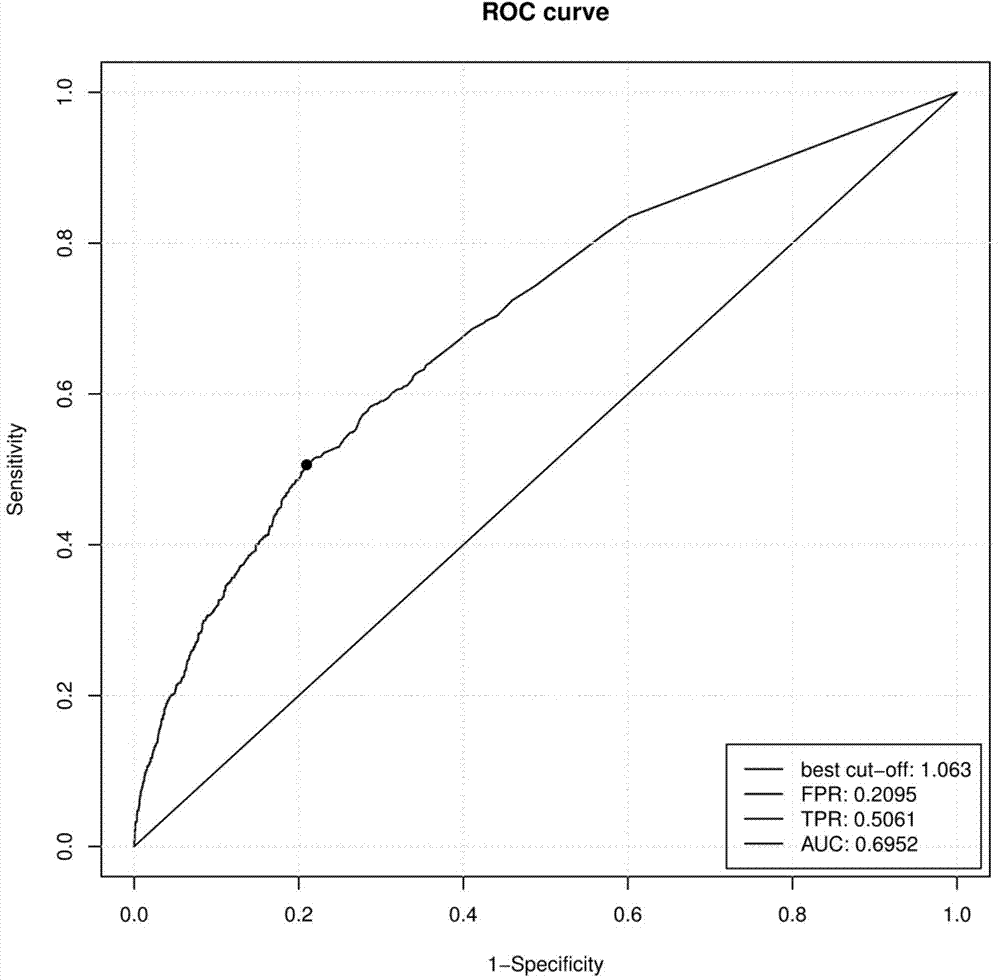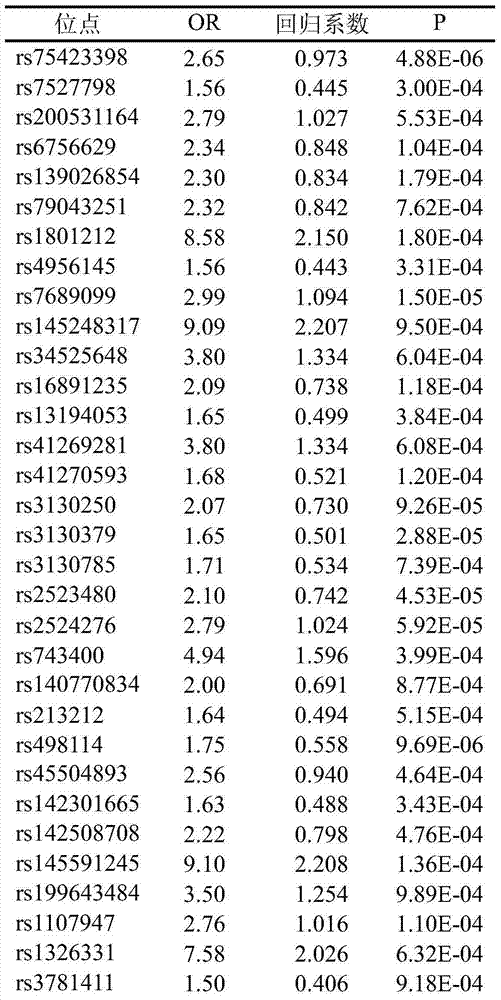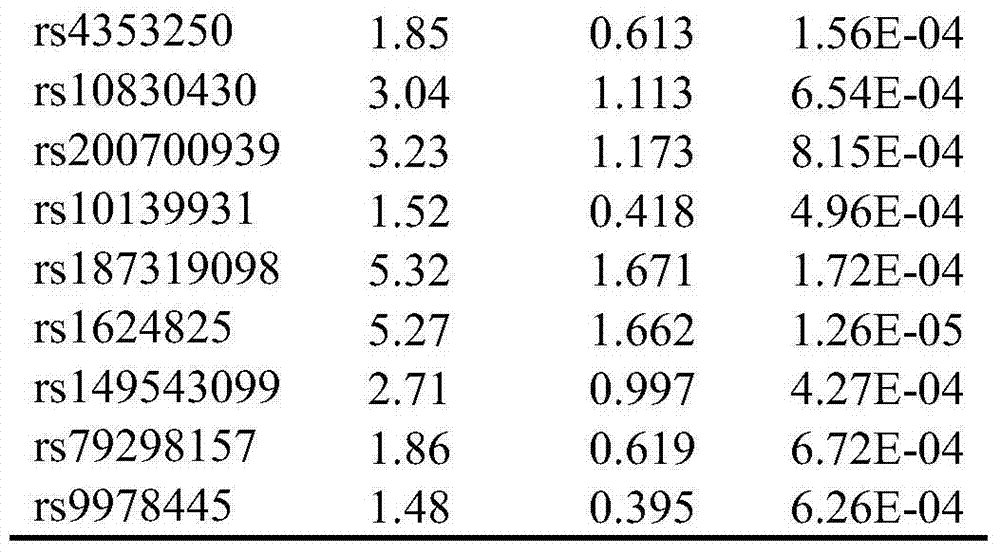Low frequency SNV marker associated with sporadic non-syndromic CHD (congenital heart disease) auxiliary diagnosis and application of low frequency SNV (single nucleotide variant) marker
A technology for auxiliary diagnosis and syndrome, applied in the field of genetic engineering and reproductive medicine
- Summary
- Abstract
- Description
- Claims
- Application Information
AI Technical Summary
Problems solved by technology
Method used
Image
Examples
Embodiment 1
[0068] The collection of embodiment 1 sample and the arrangement of sample data
[0069] The inventor collected a large number of blood samples from patients with sporadic non-syndromic congenital heart disease from the First Affiliated Hospital of Nanjing Medical University, Nanjing Children's Hospital, and Xi'an Xijing Hospital from 2006 to 2012. After sorting out the sample data, The inventor has selected 7937 samples that meet the following criteria from the whole exome chip scan and the experimental sample of Sequenom MassARRAY genotyping:
[0070] 1. Patients with non-syndromic congenital heart disease diagnosed by echocardiography, cardiac catheterization or surgery;
[0071] 2. Exclude patients with congenital abnormalities and chromosomal abnormalities in other organs;
[0072] 3. Exclude first-degree relatives with congenital heart disease, mothers with diabetes, phenylketonuria, mothers exposed to teratogens (such as pesticides or organic solvents) and taking drugs...
Embodiment 2
[0075] Example 2 Whole Exome Scanning of Low Frequency and High Penetrance Genetic Markers in Peripheral Blood DNA
[0076] Among the 984 eligible patients with sporadic non-syndromic congenital heart disease and 2953 healthy controls, the two groups were matched in age and gender. These two groups of people were passed through Illumina Human Exome Beadchip (Illumina Inc., San Diego, CA) chip detection obtained relevant results. The specific steps are:
[0077] 1. Add hemolysis reagent (i.e. lysate, 40 parts) to the peripheral blood stored in the 2ml cryopreservation tube. Dilute the TrisHcl solution to 2000ml, the same below), turn it upside down and mix it completely.
[0078] 2. Removal of red blood cells: Fill the 5ml centrifuge tube to 4ml with hemolysis reagent, mix by inverting, centrifuge at 4000rpm for 10 minutes, and discard the supernatant. Add 4ml of hemolysis reagent to the precipitate, invert and wash again, centrifuge at 4000rpm for 10 minutes, and discard ...
Embodiment 3
[0089] Example 3 Sequenom MassARRAY Genotyping of Low Frequency and High Penetrance Genetic Markers
[0090] The low-frequency and high-penetrance genetic markers found to be associated with congenital heart disease in the above-mentioned whole exome scan were detected in another 2000 cases of sporadic non-syndromic congenital heart disease and 2000 healthy controls. The steps are:
[0091] 1. Add the hemolysis reagent to the peripheral blood stored in the 2ml cryopreservation tube, mix it upside down and transfer it completely.
[0092] 2. Removal of red blood cells: Fill the 5ml centrifuge tube to 4ml with hemolysis reagent, mix by inverting, centrifuge at 4000rpm for 10 minutes, and discard the supernatant. Add 4ml of hemolysis reagent to the precipitate, invert and wash again, centrifuge at 4000rpm for 10 minutes, and discard the supernatant.
[0093] 3. Extract DNA: Add 1ml of extract solution and 8μl of proteinase K to the precipitate, fully oscillate and mix on a shak...
PUM
 Login to View More
Login to View More Abstract
Description
Claims
Application Information
 Login to View More
Login to View More - R&D
- Intellectual Property
- Life Sciences
- Materials
- Tech Scout
- Unparalleled Data Quality
- Higher Quality Content
- 60% Fewer Hallucinations
Browse by: Latest US Patents, China's latest patents, Technical Efficacy Thesaurus, Application Domain, Technology Topic, Popular Technical Reports.
© 2025 PatSnap. All rights reserved.Legal|Privacy policy|Modern Slavery Act Transparency Statement|Sitemap|About US| Contact US: help@patsnap.com



